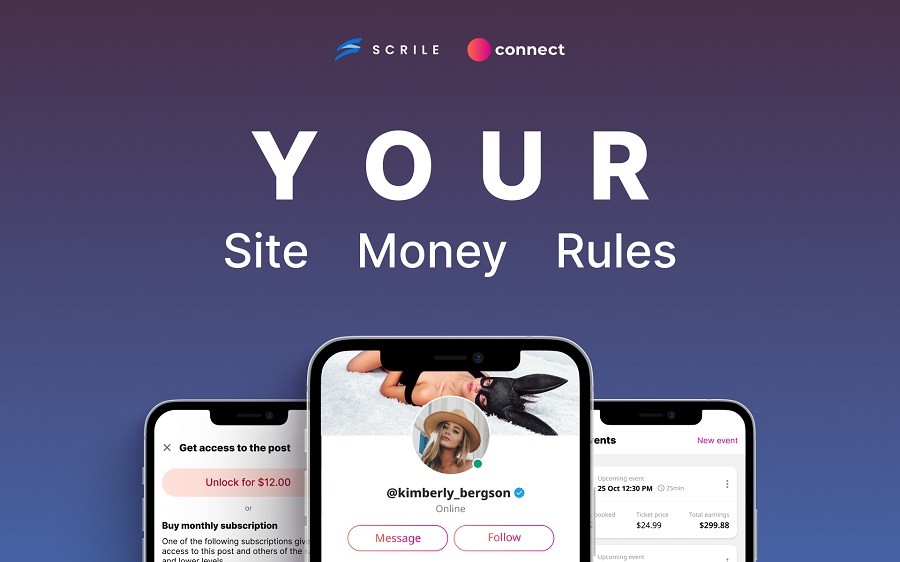How to Create a Corporate Portal in 2025
Discover how a custom corporate portal boosts collaboration, streamlines workflows, and replaces scattered tools with one centralized solution.

corporate portal
Forget everything you remember about clunky intranets. The corporate portal in 2025 is something else entirely. It’s no longer just a dusty dashboard for HR forms and holiday schedules—it’s the heartbeat of how teams work, share, and build momentum together.
A corporate portal today is a fully integrated digital workspace. Chat happens there. Files are stored and shared. Video meetings start without jumping between tabs. Onboarding runs automatically. Every employee — remote or in-office — knows exactly where to find what they need. This isn’t just another internal tool. It’s the core of how work gets done.
This shift didn’t happen overnight. Businesses hit a wall juggling a dozen disconnected tools. A proper portal company doesn’t just throw another app at the problem—it builds something that connects the dots.
This article takes you inside the modern collaboration ecosystem: what features matter, what real companies are doing with their portals, and why building your own custom solution might be the smartest move you make this year.
Forget bloated tool stacks. Your people need one place to think, talk, and ship. Let’s break down how a corporate portal gets you there.
The Shift from Intranet to Intelligent Portals
The idea of an internal digital workspace isn’t new. Back in the early 2000s, most companies had intranets — internal websites that hosted HR documents, announcements, maybe a company directory if you were lucky. They were static, clunky, and mostly ignored.
That model didn’t last. As teams became more digital, the demands on internal tools grew. People needed faster communication, more real-time collaboration, and access to everything from anywhere. The corporate portal evolved to meet that pressure.
Why Intranets Had to Evolve
Here’s what changed over the last decade:
- Remote work became permanent, not a perk
- Global teams needed one central digital workspace
- App sprawl exploded, with employees juggling 10+ tools daily
- Onboarding and internal communication demanded better UX
- Security and role-based access became essential at scale
Traditional intranets couldn’t keep up. They weren’t designed to integrate calendars, video calls, task boards, CRM systems, or real-time chat. So companies started looking for smarter, more flexible systems — ones that could function as the operational core of a modern workplace.
Companies are rapidly adopting modern internal portals, and the benefits are clear: better engagement, faster knowledge sharing, and smoother onboarding processes. Well-built systems with centralized access and modular features help cut down on tool sprawl and save thousands in productivity losses every year.
Take a mid-size hybrid company, for example. Instead of juggling Slack, Dropbox, Google Meet, and Trello, they built a unified corporate portal that houses chat, file sharing, group meetings, documentation, and task workflows in one branded interface. The impact? Less chaos, faster decision-making, and smoother onboarding across time zones.
The evolution from intranet to intelligent portal isn’t a design upgrade. It’s a shift in how companies think about internal operations. A modern portal is a connected environment — not just a storage space — and businesses that recognize this are building tools that actually support how work happens in 2025.
Portal Features That Drive Collaboration in 2025

Collaboration used to mean back-to-back emails, clunky attachments, and meetings that could’ve been messages. That’s over. In 2025, smart company portals offer a single digital environment where teams communicate, organize, and build things together — without digging through five different apps or losing time to silos.
The best portal features aren’t bells and whistles. They’re practical tools that solve real problems. Here’s what makes a modern portal worth using.
Built for Conversation, Not Confusion
Collaboration doesn’t happen in isolation. Strong portals create a connected flow of communication — not just a noticeboard.
- Group chats and team threads let employees talk without switching to Slack or Teams.
- Announcements and internal broadcasts keep everyone in the loop without flooding inboxes.
- Built-in video calls remove the need for outside tools, and keep meetings just a click away from related tasks and files.
One European tech firm cut internal email by 42% after moving to a portal-based system with integrated chat and announcements. It wasn’t about fewer messages — it was about better visibility.
Tools That Actually Work Together
A modern corporate portal should feel like the operating system of your company — not just a collection of links.
- Document libraries with smart search and version control eliminate the mess of shared drives.
- Role-based dashboards personalize access so that every team member sees the right data, tools, and notifications.
- Task automation helps teams set up flows for approvals, feedback, content publishing, or onboarding without bottlenecks.
- API and app integrations bring in CRMs, calendars, and even analytics tools so everything talks to each other.
According to a McKinsey report, companies with integrated portal systems reduce tool-switching time by over 20%, saving up to nine working days per employee per year.
What used to take a combination of six platforms can now live under one roof. The result? Fewer delays, faster execution, and better focus.
Modern company portals aren’t just resource libraries. They’re decision-making hubs, aligned with how teams work — fast, collaborative, and often distributed. And when the right tools are embedded into the flow, people stop asking “Where do I find that?” and start asking “What’s next?”
Why Portals Outperform Email and Fragmented Tools

Teams everywhere are still relying on a fragile web of tools — Slack, Gmail, Trello, Google Drive, Notion. It feels like control, until the wrong version gets sent, a task slips through the cracks, or someone forgets where the file was shared. Add in remote staff across time zones, and what you have is a workflow full of friction.
A corporate portal doesn’t fix things by adding yet another app. It fixes things by removing the mess. It becomes the one place where all internal work lives — and where people can finally focus.
Fragmented Tools Drain Time and Focus
When everything’s spread out, even basic tasks become slower than they should be. Here’s what starts going wrong:
- Files are duplicated or hard to find
- Feedback is scattered across platforms
- Team members miss updates unless they’re watching every tool
- Handovers between departments get sloppy
- New hires need days just to learn where everything lives
And it’s not just annoying — it’s expensive. According to a McKinsey report, the average employee spends 8–9 hours each week just hunting down information or toggling between tools. That’s a full day lost — every week. Multiply that across a team of 50, and you’re burning hundreds of hours monthly just on context switching.
Portals Restore Context and Save Momentum
With a well-built corporate portal, updates, files, discussions, and tasks are tied together. Teams don’t have to guess where to look. There’s one system for announcements, one hub for meetings, one shared space for planning. Everyone works in the same environment — and that clarity makes collaboration smoother.
A centralized portal doesn’t just help with communication. It improves accountability, speeds up decision-making, and eliminates the constant back-and-forth that kills momentum. The advantages portal users experience most often? Fewer missed updates. Cleaner project handoffs. Less tool overload. And a team that finally works in sync.
Trying to scale across five disconnected systems is asking for bottlenecks. A real internal workspace doesn’t scatter your attention — it sharpens it.
Use Cases: Who Needs a Corporate Portal (And Why?)

Not every company has the same workflow. But most struggle with the same core problems — too many tools, broken communication, lost time. A corporate portal doesn’t just offer a digital dashboard. It becomes a custom-built operating environment, molded to fit how different teams actually work.
Here’s how different departments and company types are using portals to reduce chaos and get results.
Remote-First Teams Need a Shared Foundation
For distributed teams, the corporate portal is not optional—it’s necessary. Without it, time zones cause delays, knowledge becomes siloed, and onboarding takes forever.
Take a software company with coders in Poland, designers in Canada, or marketers in the US. Instead of competing with Slack, Dropbox, Zoom, or Google Docs, it has established one portal where the standups happen through group video calls, project files get uploaded to the tasks, and announcements happen on the shared board for announcements. Nobody gets left behind. Work moves faster because context is always available.
HR and Onboarding Need Structure and Simplicity
Bringing in new hires shouldn’t take two weeks of email threads and broken links. A good portal streamlines onboarding by putting training materials, checklists, contracts, and team intros in one easy-to-navigate space.
- New hires get immediate access to company policies, goals, and tools
- Managers assign onboarding steps directly inside the portal
- HR tracks completion in real-time
- Team intros and video welcomes are baked into the process
Companies using centralized onboarding portals have reported a 30% drop in ramp-up time, especially in mid-sized remote teams.
Sales Teams Need Fast Access and Fewer Silos
Sales reps lose deals when they’re stuck waiting for decks, approvals, or product info. A corporate portal fixes that by connecting sales to marketing, legal, and product without bottlenecks.
All documents, messaging templates, pricing calculators, and training resources live in one place. Instead of pinging five people on Slack, reps just log in and grab what they need. Internal enablement becomes self-serve.
Product Teams Need Clear Cross-Functional Workflows
Product development rarely lives in one department. It moves between engineering, design, QA, and leadership. Portals help product teams create dedicated workspaces where everyone sees what’s shipping, what’s blocked, and what decisions are pending.
This is one of the advantages of collaboration portal setups: keeping product work visible, documented, and moving forward — even when multiple teams are involved.
A portal doesn’t just store information. It shapes the way people interact with it. When built right, it becomes the backbone of every department — not just IT.
Build or Buy? Portal Development in 2025

Once you’ve decided your team needs a corporate portal, the next question hits: build it yourself, or get someone to build it right?
There are two main routes. Some companies lean on no-code SaaS builders — fast, cheap, and usually good enough for basic use. Others go the custom path, working with developers to craft something that actually fits their needs, their brand, and their workflow.
No-code tools can get a portal up and running in days. But what you gain in speed, you give up in control. You’re stuck with fixed layouts, limited user roles, and clunky workarounds. As soon as your team outgrows the basics, you’ll find yourself bending your process to fit someone else’s framework.
Custom development is a different play. It takes more time, but you get full ownership — and full flexibility.
Here’s where custom builds win every time:
- Complete control over UI and layout
- Role-based access tailored to your team’s structure
- Built-in group chat and video calls with no third-party add-ons
- Seamless integration with tools you already use
- Stronger compliance with internal security policies
- Branding that matches your company’s voice, not someone else’s
No-Code Tools vs Custom Development: What Fits Your Needs?
| Feature / Factor | No-Code SaaS Tools | Custom Development |
| Setup Speed | Very fast (1–3 days) | Longer (depends on scope; typically weeks) |
| Ease of Use | User-friendly, drag-and-drop | Requires collaboration with dev team |
| Customization | Limited to templates and presets | Fully tailored to your brand and structure |
| Scalability | Limited beyond small teams | Designed to grow with your business |
| UI/UX Control | Fixed layouts | Full control over interface and logic |
| Tool Integration | Often restricted or add-on based | Native or deep integrations possible |
| Security & Compliance | Shared hosting, limited flexibility | Private deployment, matches internal policies |
| Branding | Generic branding | 100% white-labeled, reflects your identity |
| Ongoing Support | Varies by vendor | Continuous, project-based support |
| Best For | Small teams with basic needs | Businesses that need precision and scale |
If your portal needs to do more than just store files and post announcements, a generic builder won’t cut it. The companies that invest in tailor-made portals aren’t buying features — they’re investing in infrastructure that can scale and adapt with them.
This is exactly where Scrile Connect comes in — a development service built for businesses that want more than a template. It’s not an off-the-shelf product. It’s a team that builds the right tool for your exact use case — fully white-labeled, fully flexible, and built to grow with your company.
In a world of shortcuts, building the right thing once is still the smarter move.
Scrile Connect: Build a Custom Corporate Portal That Works Your Way

Most platforms offer the same promise: plug it in, set it up, and hope it fits. Scrile Connect isn’t that. It’s a development service — one that builds your corporate portal the way you need it to work.
You’re not choosing from a list of templates. You’re defining your own structure, layout, permissions, and logic. Whether you’re managing a hybrid team, onboarding partners, or running a gated B2B network, Scrile Connect delivers a portal that’s tailored from the ground up.
Built for Control, Not Just Convenience
Scrile Connect doesn’t box you into someone else’s framework. It gives you full ownership over your workspace — every tab, feature, and user role built around how your organization runs.
Need a branded onboarding space with role-based access? Done. Want internal chat, video meetings, and document libraries under one login? It’s in. Need dashboards for different departments, plus a secure admin backend? Fully integrated.
Here’s what Scrile Connect brings to the table:
- White-labeled interface with your branding and domain
- Group chats and built-in video calls
- Custom user roles, permissions, and department dashboards
- Secure cloud infrastructure with GDPR-ready hosting
- Optional monetization tools (subscriptions, paywalled content)
- Ongoing updates, support, and scalability built in
You define the user journey. You define the logic. Scrile Connect builds it to spec.
Flexible Enough for Any Use Case
Scrile Connect isn’t just for internal HR or IT teams. It’s used to build portals for:
- Fully remote companies managing hundreds of employees
- B2B ecosystems that need client dashboards and secure data sharing
- Member communities offering gated content and paid access
- Sales and onboarding hubs where teams need guided flows, resources, and video training
Every build is unique — designed around your workflows, not forced into someone else’s model.
And when your team grows, your portal scales with it. You’re not tied to pricing tiers or feature limits. You’re working with a service that evolves with your business — technically and financially.
With Scrile Connect, you’re not buying software. You’re investing in a custom-built foundation for how your team works, grows, and stays connected.
Conclusion
The way teams work has changed — permanently. What hasn’t changed is the need for clarity, connection, and control. A corporate portal is no longer a luxury or an afterthought. It’s the system that holds your team together, keeps projects moving, and gives every employee the tools to contribute without friction.
In 2025, patchwork toolsets just don’t hold up. Juggling five platforms for messaging, storage, meetings, and task tracking doesn’t scale — it burns time, drains focus, and kills momentum. A centralized portal solves this by becoming your team’s single source of truth, communication, and execution.
For companies that are serious about long-term growth, branded control, and secure collaboration, it’s time to build something that works your way. That’s exactly what Scrile Connect is designed for — a development service that delivers portals tailored to your needs, your brand, and your structure.
You don’t need another tool. You need a real foundation.
Contact the Scrile Connect team to explore how your custom portal could look — and what it can unlock for your company.
FAQ
What is a corporate portal?
Corportals, or corporate portals, are internal digital systems that give employees access to tools, updates, and documents in one place. They’re designed to improve collaboration, centralize communication, and streamline daily work. Modern portals go beyond traditional intranets by including real-time chat, video calls, role-based dashboards, and automation — all within a secure, customized environment tailored to how your team works.
Can I create my own portal?
Yes, simple portals can be built using no-code tools. But for advanced features like group video calls, team dashboards, or secure user roles, you’ll need some coding skills or a custom development team. If branding, integration, or scalability matters, it’s smarter to work with experts who can build a solution that fits your company structure and workflow.
What is also called a corporate portal?
A corporate portal is also known as an intranet or enterprise information hub. It’s a private website where employees access documents, internal updates, team tools, and external partner links. Some portals also include search engines and department-specific pages. Today’s versions are more interactive and customizable than the outdated intranets of the past.
Read also
| Article | Why it’s worth reading |
|---|---|
| Remote Working Tools in 2025: Top Solutions | If your team is remote or hybrid, this guide helps you choose a baseline stack for communication, tasks, and files so people stop juggling five messengers at once. |
| Best Collaboration Tools for Business in 2025: Top Picks | Once the basics are in place, this article shows which collaboration tools actually improve workflows instead of adding more noise and notifications. |
| Improve Team Communication in 2025: Effective Strategies – Scrile | If tools alone didn’t fix communication, this piece focuses on processes: rituals, async updates, and rules that keep everyone aligned without daily fire-fighting. |
| How to Build an Employee Portal in 2025: Expert Tips – Scrile | If you’re ready to build your own portal, this article walks through structure, roles, access levels, and tech choices so the project doesn’t become an expensive intranet nobody uses. |
